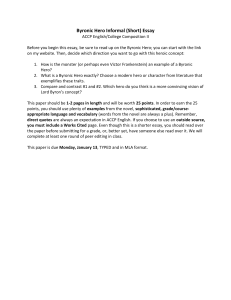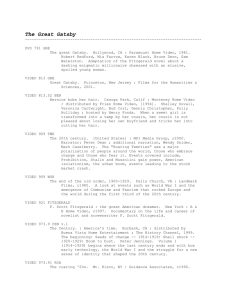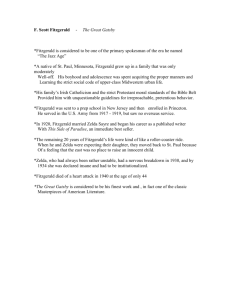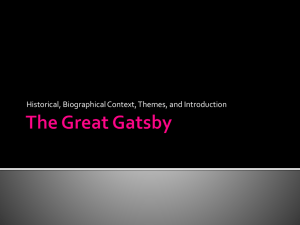The Great Gatsby
advertisement
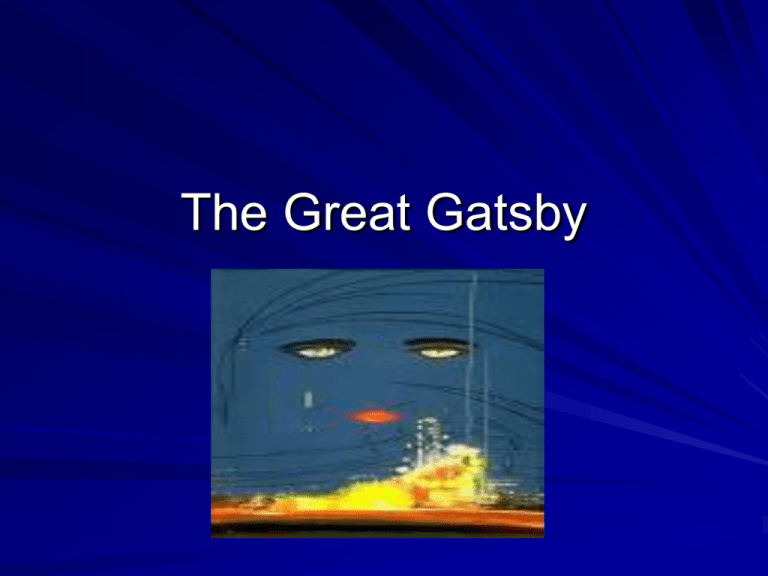
The Great Gatsby Francis Scott Key Fitzgerald Born in St. Paul, Minnesota on Sept. 24, 1896 Lived on the outskirts of a wealthy neighborhood, but never fully accepted by the rich children 1918- met and fell in love with Zelda Sayre 1920- When Zelda decided he was financially secure after publishing two novels, they married Fitzgerald Lived an extravagant lifestyle that included heavy alcohol consumption and lavish parties 1925- Published The Great Gatsby, his most famous work 1930- Zelda had the first of three mental breakdowns- in 1934 she was institutionalized and remained there for the rest of her life Fitzgerald Although still married to Zelda, Fitzgerald fell in love with Sheila Graham She helped revive his writing career and spent the last few years of his life with him 1940- F. Scott Fitzgerald died in relative obscurity The Roaring Twenties The Roaring Twenties-success in WWI, strong economy led to optimism The Jazz Age- Jazz of New Orleans and Chicago; party atmosphere The Age of Intolerance – “us and them” mentality; effort to unmask Communists; supremacist organizations The Age of Wonderful Nonsense- flappers, gin, moral and sexual revolution http://www.bbc.co.uk/learningzone/clips/early-music-technology-1920sjazz/6605.html Consumerism Mass–production and chain stores drove down prices and encouraged spending Credit was being used to help American buy cars. Interest was charged Runaway consumer credit was part of the overload that resulted in the Great Depression Spending on entertainment increased“talkies” Prohibition 18th Amendment- prohibited the manufacture, sale, or transportation of liquor- Jan. 16,1920 Although the sale was bannedpossession was not Alcohol was widely available at “speakeasies”- underground drinking establishments Prohibition Alcohol was often smuggled in from Canada Wine was still produced and could only legally be sold for religious services Whiskey was available by prescription for medicinal purposes Prohibition did nothing to stop drinking alcohol, it only opened the door for organized crime to take over the distribution Prohibition Although the novel never specifies how Gatsby amasses such a fortune, there are suggestions that he has been involved in illegal activities- possibly bootlegging (illegal trafficking of alcohol Style, Setting, Themes Known for his imagistic and poetic prose, topics are influenced by his surroundings Motif of geography plays an important role in defining social stratification. Weather is used to reflect human conditions. The green light and eyes of Dr. Eckleburg are mentioned several times, with various meanings Cont’d. Three things to note are names, dates and ages The setting of the story is in the summer of 1922, near NYC, in the towns of West Egg and East Egg Context- immigration increased creating a dislike of outsiders, rampant materialism 1919- World Series scandal 19th Amendment- granted women right to vote. Women began challenging notions of femininity Themes The Decline of the American Dream The Stratification of the Social Classes The Hollowness of the Upper Class Byronic Hero Jay Gatsby is often compared to as a Byronic Hero “Byronic Hero” is an anti-hero developed by Lord Byron The Byronic Hero is larger than life, but flawed (a rebel) Byronic Hero Is passionate Has a troubled or mysterious past Can be introspective Fiercely independent Exhibits self destructive tendencies Rejects norms of society

